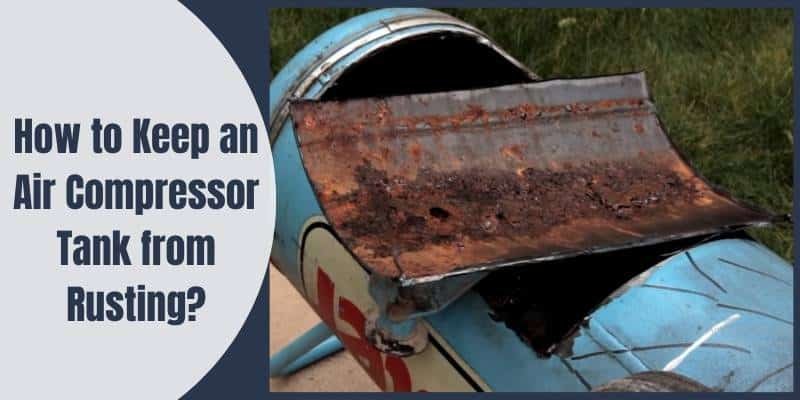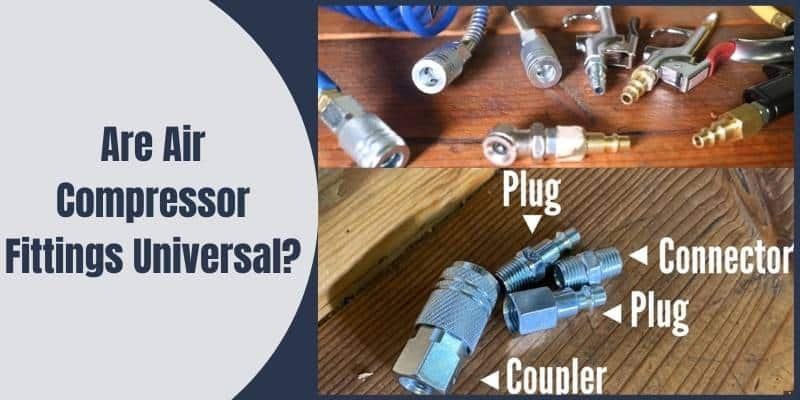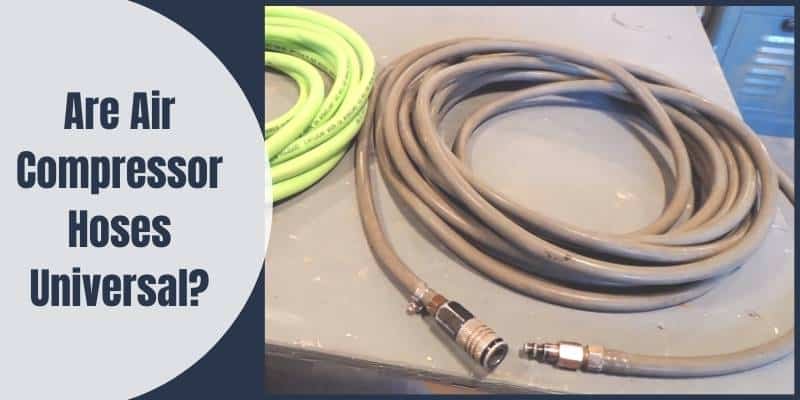Disclosure: This post contains affiliate links and I will be compensated if you make a purchase after clicking through my links. Learn More
Rusting is the natural process of metal deteriorating. It’s something that air compressor tanks are particularly susceptible to, as they are constantly in contact with air and moisture.
Rusting is usually reversible, but it may harm the integrity of your air compressor severely. That’s why knowing the causes and prevention of rust in your air compressor tank is crucial.
How Does an Air Compressor Tank Rust?

Air compressors, particularly the tank, are prone to rust and corrosion. This happens because there is moisture in the air we breathe, and some of that air enters the compressor tank.
Although most of the moisture will leave the tank through the nozzle, around 10% remains in the tank. Later, when the air is compressed (above normal atmospheric pressure), the moisture condenses and turns into liquid.
The more you run the air compressor, the more condensation forms. That’s how the water at the bottom of the tank is produced. If not regularly drained, this accumulated water will eventually begin the oxidation process.
Even if your air compressor looks spotless, the inside of the tank can still have a lot of water sitting, which is why assessing the integrity of an air compressor tank from the outside is difficult.
Rust is a highly corrosive chemical reaction that can wear the metal component of the tank severely, causing small punctures.
Don’t Try to Fix the Rust Yourself
Seeing large quantities of rust particles or flakes draining from the tank, you may feel tempted to fix the problem yourself.
Some daring owners use phosphoric acid to fight the corrosion on their air compressor. Some even try to clean the compressor using methods like manual scrubbing. However, all these methods are often ineffective and can actually make the problem worse.
The inner structure of an air compressor tank may get weaker if rust and corrosion are tried to be removed from it. This even increases the likelihood of it exploding later when the (pressure) limit is exceeded.
There are also risks to cleaning the tank with corrosion inhibitors or anti-corrosive chemicals since they can damage the seals and O-rings that are inside the air compressor.
For safety reasons, if there is too much condensation and rust in your air compressor, it may be better to replace it rather than to try to fix it. Be sure to consult with an experienced professional before taking any action.
How to Keep an Air Compressor Tank from Rusting?
One of the most effective ways you can prevent rust and corrosion from happening is by draining the air-compressor tank on a regular basis.
All you need to do is open the drain valve on the bottom of the compressor tank, and the moisture that’s gathered at the bottom will be removed. The best is to do this every time you finish operating the air compressor. Alternatively, you can do it once at the end of the day and avoid draining the tank too often.
Make sure you keep the drain valve open for a few hours or until you need to use the air compressor again after the tank’s water is completely drained out. This will let the tank fully dry out, guaranteeing that no moisture is left behind.
Adding a purge valve or automatic tank drain system to our stationary air compressor is another way to help prevent rust. This tool is commonly used with larger commercial air compressors, but it is becoming more affordable, so people can now buy it to use with their smaller home version.
Install it near the drain valve and it will use a timer to purge the water from the tank every time the compressor is turned on. This eliminates the need for manual draining because the tank is drained automatically in a matter of seconds.
An aftercooler is another useful addition for large commercial air compressors. It reduces the amount of water vapor that can enter your compressor. It makes it possible by trapping warm air, cooling it, and then allowing it to enter the compressor tank.
This method prevents moisture from forming in the first place and aids in the elimination of heat, which has a negative impact on equipment sealing and lubrication. For best results, position your aftercooler as close to the compressor discharge as possible.
Alert! Do Not Ruin Your Tank for Future Applications
Do not add any type of coating on the inside of the tank to fight rust. Doing so will only make the problem worse and you will never be able to get it all out. An uncoated air compressor tank can absorb a lot of heat, resulting in a lot less moisture. If you apply a protective layer, the pump will get a lot hotter than it was designed for. Furthermore, harsh chemicals like sulphuric acid may damage any subsequent air tools you use.


